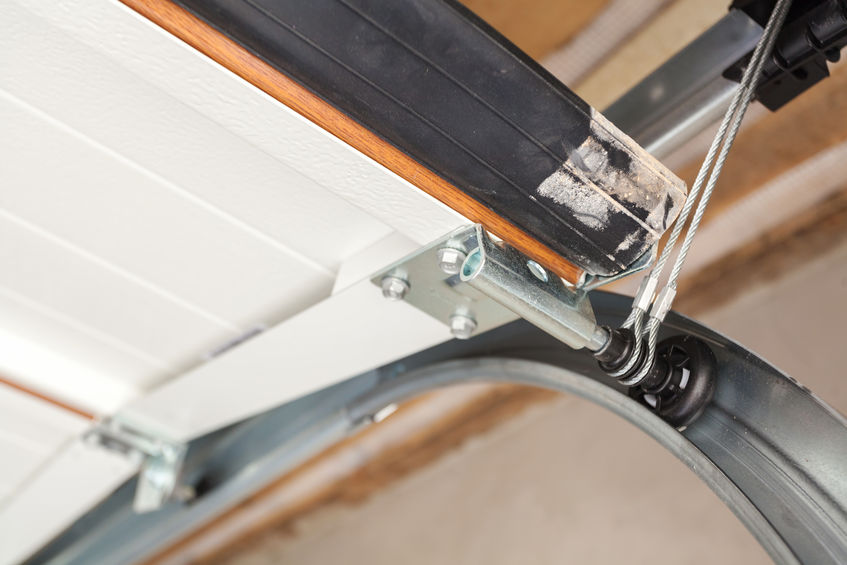Metal doors are strong and durable. Yet, they can face issues over time.
Metal doors are a popular choice for many homes and businesses due to their strength and longevity. But like any other part of your property, they can develop problems. Rust, dents, squeaky hinges, or alignment issues can all impact their functionality.
Understanding these common issues and knowing how to address them can save you time and money. This guide will walk you through the most frequent metal door problems and provide simple solutions. Whether you’re a DIY enthusiast or just looking to maintain your door, these tips will help keep your metal door in top shape. Let’s dive in!
Sticking Doors
Sticking doors can be a common issue with metal doors. It happens when doors do not open or close smoothly. This can be frustrating and inconvenient. Understanding the causes and quick fixes can save you time and effort.
Causes Of Sticking
Several factors can cause metal doors to stick. Humidity is a common cause. Metal expands and contracts with changes in temperature and moisture. This can lead to sticking. Dirt and debris can also build up in the hinges. This prevents the door from moving freely. Misaligned hinges or frames can cause sticking too. Over time, screws may loosen and shift the door out of alignment.
Quick Fixes
There are simple solutions to fix sticking doors. First, check for loose screws in the hinges. Tighten them with a screwdriver. This can help realign the door. Clean the hinges with a brush and soapy water. Remove any dirt or debris that may be causing friction. Lubricate the hinges with oil or a silicone spray. This will help the door move smoothly. If humidity is causing the problem, use a dehumidifier in the room. This can reduce moisture and prevent metal expansion.
For more serious alignment issues, you may need to adjust the hinges. Remove the door and reposition the hinges on the frame. This can help realign the door and prevent sticking. If the problem persists, consider consulting a professional. They can provide expert advice and solutions.

Credit: www.doordoctor.com
Squeaky Hinges
Squeaky hinges on metal doors can be very annoying. They can disrupt the peace in your home or office. Understanding why hinges squeak is the first step in fixing the issue. You can easily remedy this problem with some basic tools and knowledge.
Identifying The Noise
The first step in fixing squeaky hinges is identifying the noise. Open and close the door slowly. Listen closely to determine which hinge is making the sound. Sometimes, it might be more than one hinge causing the problem.
Once you pinpoint the noisy hinge, you can focus on fixing it. This step is crucial. It helps you apply the right solution directly to the problem area.
Lubrication Tips
Lubricating the hinge is the most effective way to stop the squeak. Use a light oil or silicone spray. Apply a small amount to the hinge pin and the moving parts.
Move the door back and forth after applying the lubricant. This will help spread the oil evenly. Wipe away any excess oil with a cloth. Ensure the hinge is not dripping.
Regular maintenance can prevent squeaky hinges. Lubricate your door hinges every few months. This will keep your doors operating smoothly.
Rust Problems
Metal doors are durable, but rust can be a major problem. Rust weakens metal and makes doors look bad. It starts small and grows fast. If not fixed, it can cause serious damage.
Rust Prevention
Preventing rust is easier than fixing it. First, keep the door dry. Water causes rust. Use a cover during rain. Second, apply a rust-resistant primer. This creates a barrier against moisture. Third, paint the door. Paint adds another layer of protection. Fourth, inspect the door regularly. Look for small rust spots. Catching rust early helps prevent bigger problems.
Removing Rust
Removing rust needs some effort but can be done at home. First, use sandpaper to scrub off rust. Be gentle to avoid scratching the metal. Second, clean the area with a damp cloth. Remove all dust and debris. Third, apply a rust converter. This changes rust into a stable compound. Fourth, paint over the treated area. This seals it and prevents new rust from forming.

Credit: www.hostetlerdoor.com
Dented Panels
Dented panels on metal doors are a common issue. They can occur due to various reasons, such as accidental impacts or harsh weather conditions. Addressing these dents promptly can enhance the door’s appearance and functionality. This section provides a detailed guide to fixing dented panels on metal doors.
Tools Needed
- Rubber mallet
- Body filler
- Putty knife
- Sandpaper (various grits)
- Primer
- Paint
- Clean cloth
Step-by-step Repair
- First, clean the dented area with a clean cloth. Remove any dirt or debris.
- Use the rubber mallet to gently tap the dent from the back side. Try to make the surface as flat as possible.
- Next, mix the body filler according to the manufacturer’s instructions. Apply it to the dented area with a putty knife.
- Allow the filler to dry completely. This step ensures a solid base for further work.
- Once dry, sand the area with sandpaper. Start with coarse grit and gradually move to finer grits for a smooth finish.
- After sanding, wipe the area with a clean cloth to remove dust.
- Apply a coat of primer to the repaired area. Let it dry as per the instructions on the primer can.
- Finally, paint the area to match the rest of the door. Apply multiple coats if necessary, allowing each coat to dry before applying the next.
Fixing dented panels on metal doors is straightforward. With the right tools and steps, anyone can achieve professional results.
Loose Screws
Loose screws are a common issue with metal doors. This problem can cause the door to sag or not close properly. Addressing this issue promptly can prevent further damage to the door and frame. Regular maintenance can keep your door functioning smoothly.
Checking For Loose Screws
First, inspect the door for any visible loose screws. Check the hinges and the lock area. Look for screws that appear to be protruding or not fully seated. Use a screwdriver to test each screw for tightness.
If you find any loose screws, remove them to check for damage. Sometimes, screws can become stripped or worn out. If this is the case, you may need to replace them.
Tightening Techniques
Start by using a screwdriver to tighten any loose screws. Turn the screwdriver clockwise until the screw is snug. Avoid over-tightening, as this can strip the screw or damage the door.
If the screw hole is stripped, you can fix it with a few methods. One method is to use a larger screw. Another option is to insert a wooden matchstick or toothpick into the hole before re-inserting the screw. This provides extra grip for the screw.
For a more permanent fix, use a screw anchor. Insert the anchor into the stripped hole, then screw into the anchor. This method ensures a strong hold and can prevent future loosening.
Misaligned Doors
Misaligned metal doors can cause various issues. They may not close properly or might even get stuck. This can be a nuisance and may compromise your security. Fixing misalignment is crucial to ensure smooth operation and safety. Below, we discuss how to detect and realign misaligned doors.
Detecting Misalignment
First, inspect the door visually. Check if it sits unevenly in the frame. Look for gaps between the door and frame. Uneven gaps indicate misalignment. Another sign is difficulty in opening or closing the door. If the door sticks or scrapes the floor, it is likely misaligned.
Use a level to confirm. Place it against the door’s edge. A perfectly aligned door will show a level bubble centered. If the bubble is off, the door is misaligned. Also, inspect the hinges. Loose or bent hinges often cause misalignment.
Realignment Process
Start by tightening the hinges. Use a screwdriver to secure loose screws. If the screws are stripped, replace them with longer ones. This ensures a firm grip in the door frame.
Next, check the hinge position. Sometimes, hinges need slight adjustments. Unscrew them slightly and reposition. Then, tighten the screws again. This minor adjustment often fixes alignment issues.
If the door still misaligns, consider shimming the hinges. Place a thin piece of cardboard between the hinge and frame. This raises the door slightly and can correct alignment. Repeat for each hinge if necessary.
Finally, test the door. Open and close it several times. Ensure it operates smoothly and no longer sticks. Repeat the steps if the issue persists.
Drafty Doors
Drafty doors can cause discomfort in your home. They allow cold air to seep in, increasing your heating bills. Identifying and fixing drafts is crucial for maintaining a cozy living space.
Identifying Drafts
Identifying drafts is the first step to solving the problem. You might feel a cold breeze near the door. Check for light coming through the edges of the door. You can also use a candle. Hold it near the door edges. Watch for flickering flames. This indicates a draft.
Sealing Solutions
Once you identify the drafts, start sealing them. Use weatherstripping tape around the door frame. This creates a tight seal and blocks air. Another effective solution is a door sweep. Attach it to the bottom of your door. It prevents air from passing through the gap.
For larger gaps, use a door snake or draft stopper. Place it at the bottom of the door. These simple fixes can make a big difference. They help keep your home warm and reduce energy costs.

Credit: www.dndhardware.com
Broken Locks
Broken locks on metal doors can cause a lot of frustration. They compromise security and make daily access inconvenient. Whether the lock is jammed or the key won’t turn, understanding the issue is vital. Let’s explore common lock problems and how to address them effectively.
Types Of Lock Issues
Lock issues come in various forms. A common problem is a jammed lock. This occurs when dirt or rust builds up inside the mechanism. Another issue is a misaligned strike plate. This happens when the door or frame shifts. Worn-out keys or internal components can also lead to malfunctioning locks.
Repairing Or Replacing Locks
Repairing a lock is often the first step. Lubricate the lock with graphite powder to resolve a jammed lock. If the strike plate is misaligned, adjust its position. Use a screwdriver to move it slightly up or down.
In cases where repairs are not sufficient, replacement becomes necessary. Choose a lock that matches your door’s specifications. Follow the manufacturer’s instructions for installation. If unsure, consider hiring a professional locksmith.
Frequently Asked Questions
Why Is My Metal Door Sticking?
Metal doors stick due to humidity, misalignment, or paint buildup. Check for warped frames or hinges. Tighten loose screws or sand down the edges.
How Do I Fix A Squeaky Metal Door?
A squeaky door often needs lubrication. Apply a few drops of oil to the hinges. Move the door back and forth to spread the lubricant.
What Causes Rust On Metal Doors?
Rust forms from moisture exposure and lack of protective coating. Clean the door and apply a rust-resistant primer and paint.
How Can I Fix A Dent In A Metal Door?
Use a rubber mallet to gently tap the dent from the opposite side. For large dents, consider using a body filler and repainting.
Conclusion
Fixing metal door issues can seem tricky, but it’s manageable. Regular maintenance helps avoid many problems. Address issues promptly to extend your door’s life. Simple repairs save money and time. Check hinges, locks, and frames regularly. Keep tools handy for quick fixes.
A well-maintained door offers security and peace of mind. Happy fixing!
